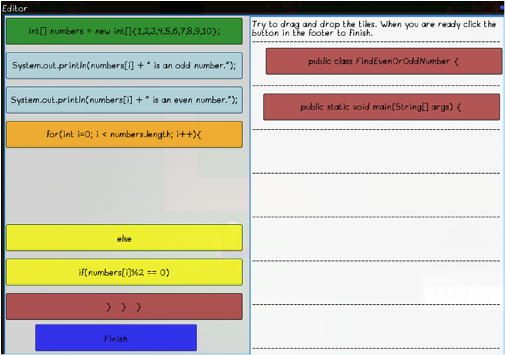The players start to come in contact with the Java programming language while they interact with their assigned Sensei. More specifically, during the tasks, students are requested to answer a series of multiple choice questions as well as fill out lines of code. The latter is done through drag & drop commands. This way, the interface becomes more attractive to students that are coming in contact with programming for the first time by alleviating the added effort of writing lines of code, and improves their critical thinking skills by allowing them to decide which lines of code correspond to the given task. A mock up view of how this process is developed is shown in Figure 1.

Figure1: Interaction with the game with drag & drop mock up
However, the game also provides the ability to write computer programs in a more traditional way, using a code editor. This is essential because, even though drag & drop commands are helpful for novice students, it is important that students learn how to write lines of codes on their own. To this end, the game will include a code editor, as shown in Figure 2.

Figure 2 Code editor mock up
The game also includes a Java compiler, which points out errors to students and thus contributes to scaffolding their learning process. Special emphasis has been given to the support of collaboration between students, since many tasks require group work to be completed successfully.